Travel Diary 1: Medellín
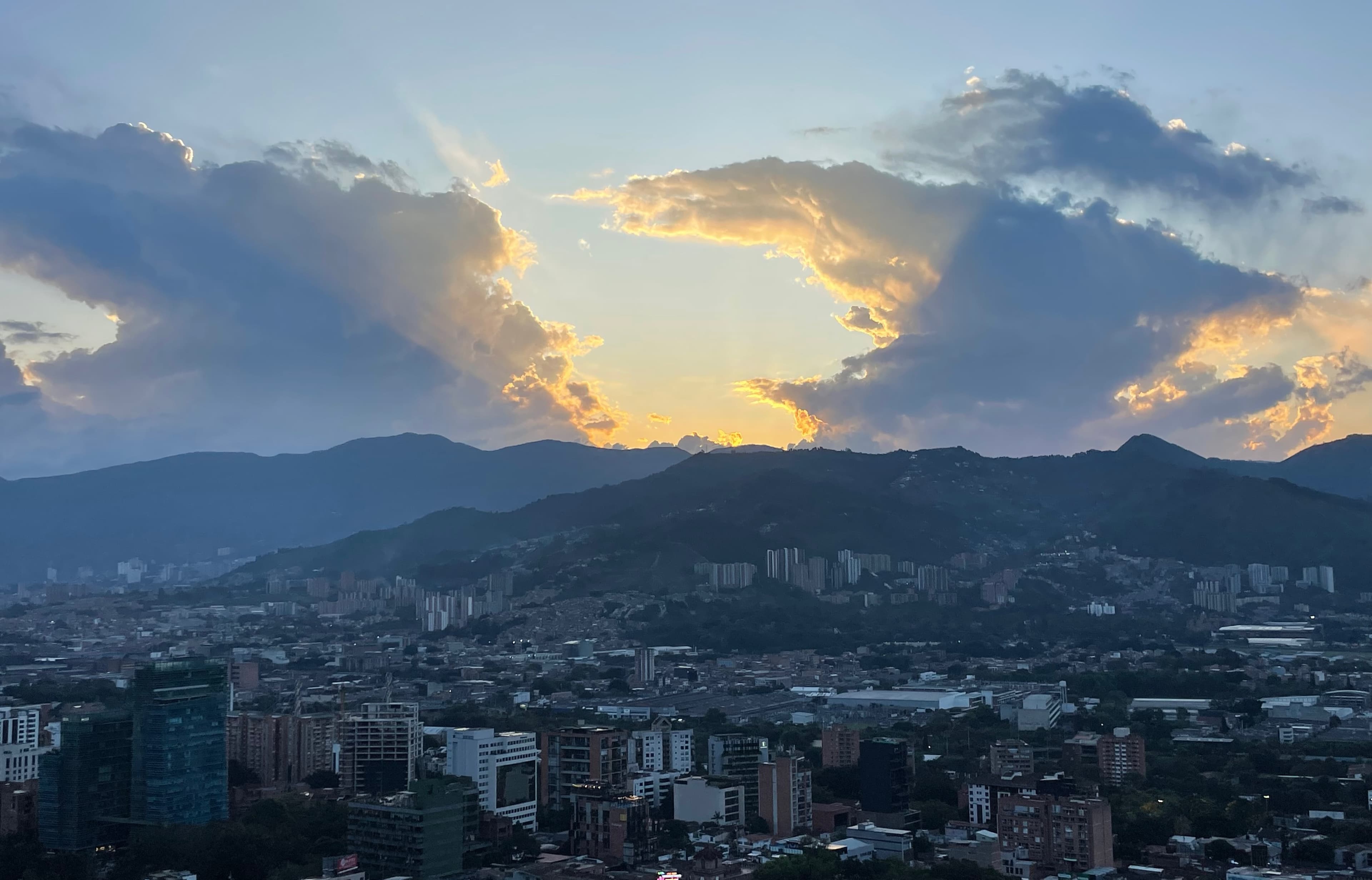
Realismo mágico
On a Saturday evening, I stood in a stranger's apartment eating Cheetos as techno blasted from a portable speaker that kept running out of battery. The guy who lived there was in a philosophical mood.
"There's a reason magical realism was born in Colombia. Weird things happen here," he declared. He paused for a beat. "For example, the fact that you guys are here is very strange."
I agreed. I'd just arrived in Colombia a week ago. Earlier that day, my friend had matched with a girl on Tinder who invited us to join her friends at the hot tub in her apartment building. She and her friend—the philosophical one—had just moved in.
I felt nervous about going. The internet is full of horror stories about locals drugging unsuspecting foreigners and stealing all their money. Shouldn't we be more cautious? What was the point of meeting these random people anyway?
We showed up with a few drinks in the late afternoon and found our way to the hot tub in the building, which turned out to be lukewarm at best. Planes headed to the regional airport flew by overhead every few minutes, rattling the windows nearby.
There were five of us: me, my friend, the girl, and her two male friends, one of whom had just moved into the new apartment with her. It turned out our language skills were on a spectrum. One of the guys worked in sales for an American company, so he begrudgingly became the translator for the evening. The other guy was a software developer aspiring to get a job with an American company, so he relished the opportunity to practice his English. In exchange, I got the chance to practice my Spanish with him. Most amusingly, my friend's Spanish was about as bad as his Tinder match's English—they could barely communicate at all.
I was struck by how much the guys tracked the latest goings-on in the American tech scene. They brought up generative AI, Elon Musk, and cryptocurrency. For a moment, I felt a little annoyed that even thousands of miles from home, I couldn't escape the typical tech conversations I'd been avoiding.
As the sun set, we all started shivering in the not-so-hot tub, so we dried off and made our way to the apartment. It was clearly brand new, as there weren't even any chairs to sit on. A set of unassembled dining chairs sat boxed on the floor. We stood around aimlessly for a while, then I offered to assemble some of the dining chairs so we'd have somewhere to sit. Each of us unboxed and unwrapped one of the chairs, racing to assemble it as quickly as possible.
Sitting on my brand-new chair, glancing out the screen door at the haze of dusk, I was struck by a sense of the uncanny. Here I was in Colombia, freshly dried off from a lukewarm hot tub, in an empty apartment assembling furniture for strangers I'd just met two hours ago. How did I get here?
La gente
Colombians are notoriously friendly, warm, and generous. I've never been to another country where someone would invite a complete stranger into their hot tub and brand-new apartment just to chat with them for a few hours. Strangers greet each other on the street or in an elevator with a friendliness that reminds me of my childhood in the American South. Warmth is in the air.
At a cafe I went to recently, I found that this sense of warmth extended to Medellín's canine residents, too.
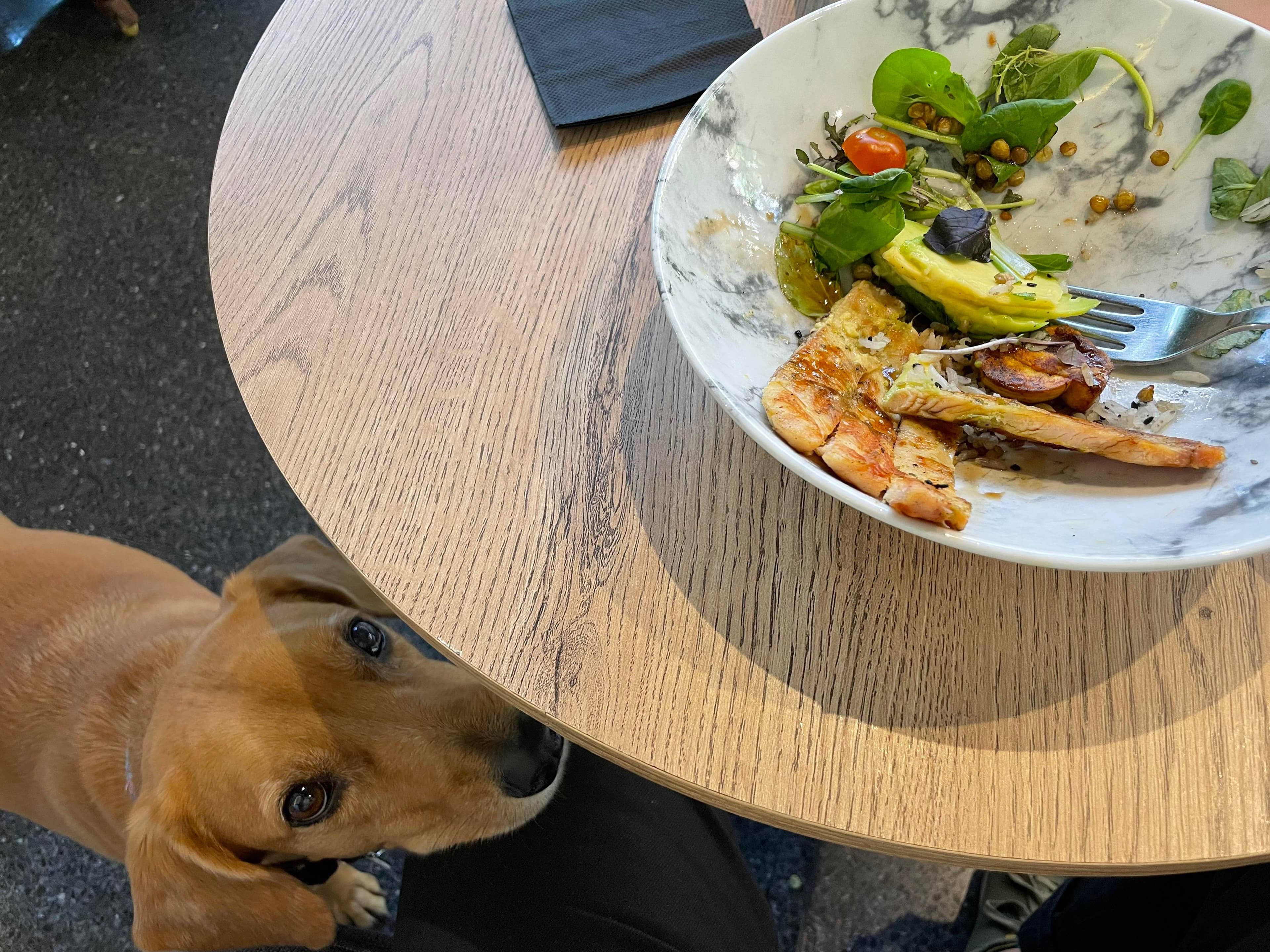
This is the fifth time I've visited Latin America in the past few years. Part of what's drawn me to this part of the world is that I can blend in so well here. Colombia, in particular, is a country of great ethnic diversity. Estimates of the ethnic composition of Colombia vary, but roughly speaking, the country is:
- 40-50% mestizo (mixed)
- 25-30% blanco (white)
- 5-10% afrocolombian
- ~5% indigenous
In the 2018 census, almost 90% of Colombians self-identified as having "No ethnicity". In other words, the mestizo and blanco identities aren't really considered ethnic groups at all.
In my experience, only the most astute locals who spend a lot of time interacting with foreigners can recognize that I'm not Colombian on sight. When I walk into most restaurants or other establishments, locals rattle off Colombian Spanish at me with full speed and fluency, leaving me a bit bewildered.
Since the foreigners who visit here are typically white and from the English-speaking world, they're referred to as gringos. This category becomes slippery for people like me, who are from the English-speaking world but don't obviously seem white or foreign.
East Asians particularly stand out. At one point, I was walking down the street with my East Asian friend. A random guy on the street ran in front of us, got our attention, bowed deeply to the ground, and yelled "NII HAOOO" at the top of his lungs. The gesture was so comically overdone that we both just burst out laughing.
Suffice it to say that some locals aren't that used to Asian foreigners, at least not yet. Traveling in South America, I'm always struck by a strange sense of brown privilege—the ability to blend in, despite being in a place that's unfamiliar. I guess not everyone has that privilege.
Trending
Why am I visiting Medellín? My friends have been asking me this since before I came, and many inquisitive locals have asked the same thing since I arrived a month ago. I do have a number of reasons: the weather is gorgeous; it's conveniently in the EST time zone; the Spanish dialect here is easy to understand and speak; the people are warm and friendly.
But I would be remiss if I didn't mention that it's just a trendy destination at the moment. Much like certain neighborhoods of Mexico City have been overrun by American tourists and expats in recent years, Medellín is starting to pick up steam.
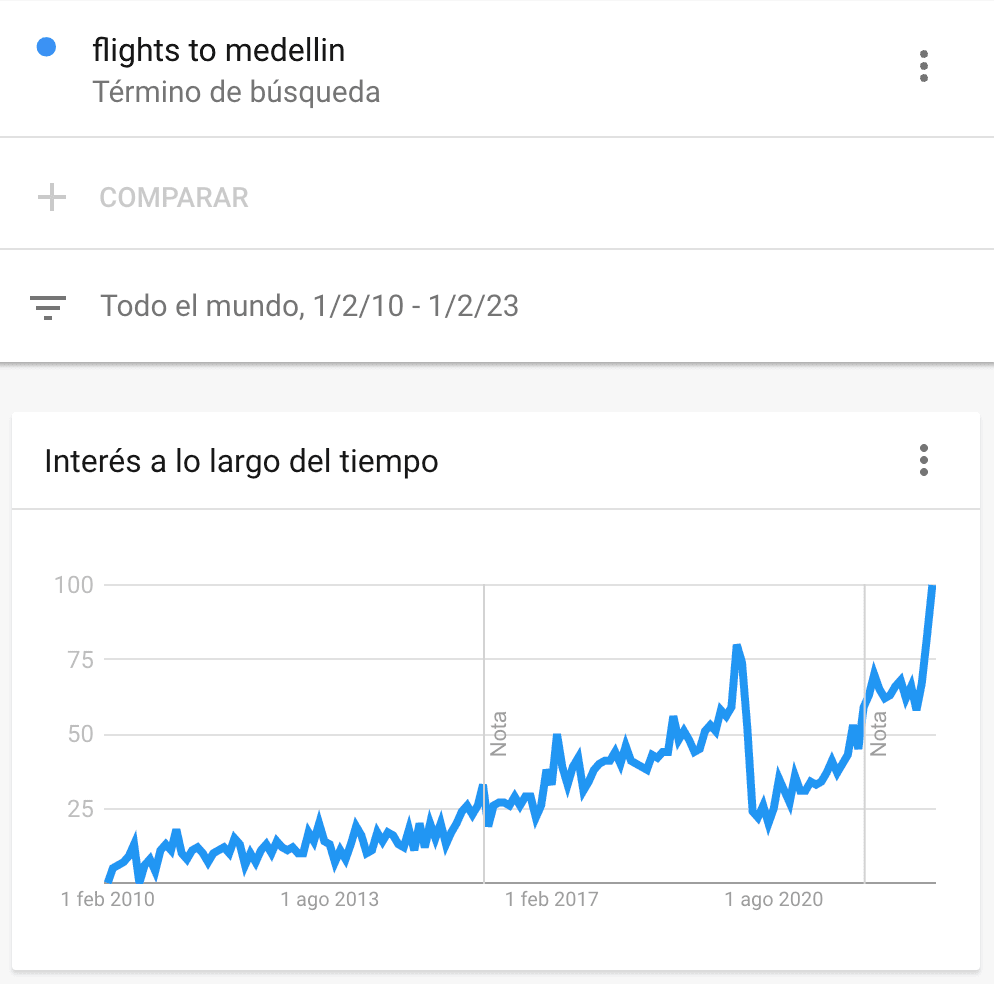
Google Trends shows that searches for "flights to medellin" have ramped up quickly, especially in the past year. Compared to searches for flights to other Latin American destinations such as Mexico City, Lima, or Cartagena, Medellín is particularly accelerating.
The locals I've met are well aware of this, and react to the sudden international interest with a mixture of pride and some annoyance. I'm staying in El Poblado, the neighborhood most commonly frequented by foreigners. Locals say it's "full of gringos", which I've certainly found to be true—I can see and overhear American and British tourists everywhere. The Google Trends data suggests that my ears don't deceive me. Excluding Colombia itself, searches for "flights to medellin" originate most commonly from the USA, Canada, Ireland, and the UK.
The Weather
Medellín is a city of microclimates. During my stint here, the weather has been unpredictable but rhythmic.
The morning consistently begins overcast or foggy, a hazy gray hanging over the valley. Dawn emerges as a dull glow rather than a bright flash.
Midday brings sunshine. Clouds part to reveal cobalt skies fringed by drifting clouds—ever-shifting, casting dynamic rays at different spots across the terrain. Light trickles through tropical flora onto the streets below.
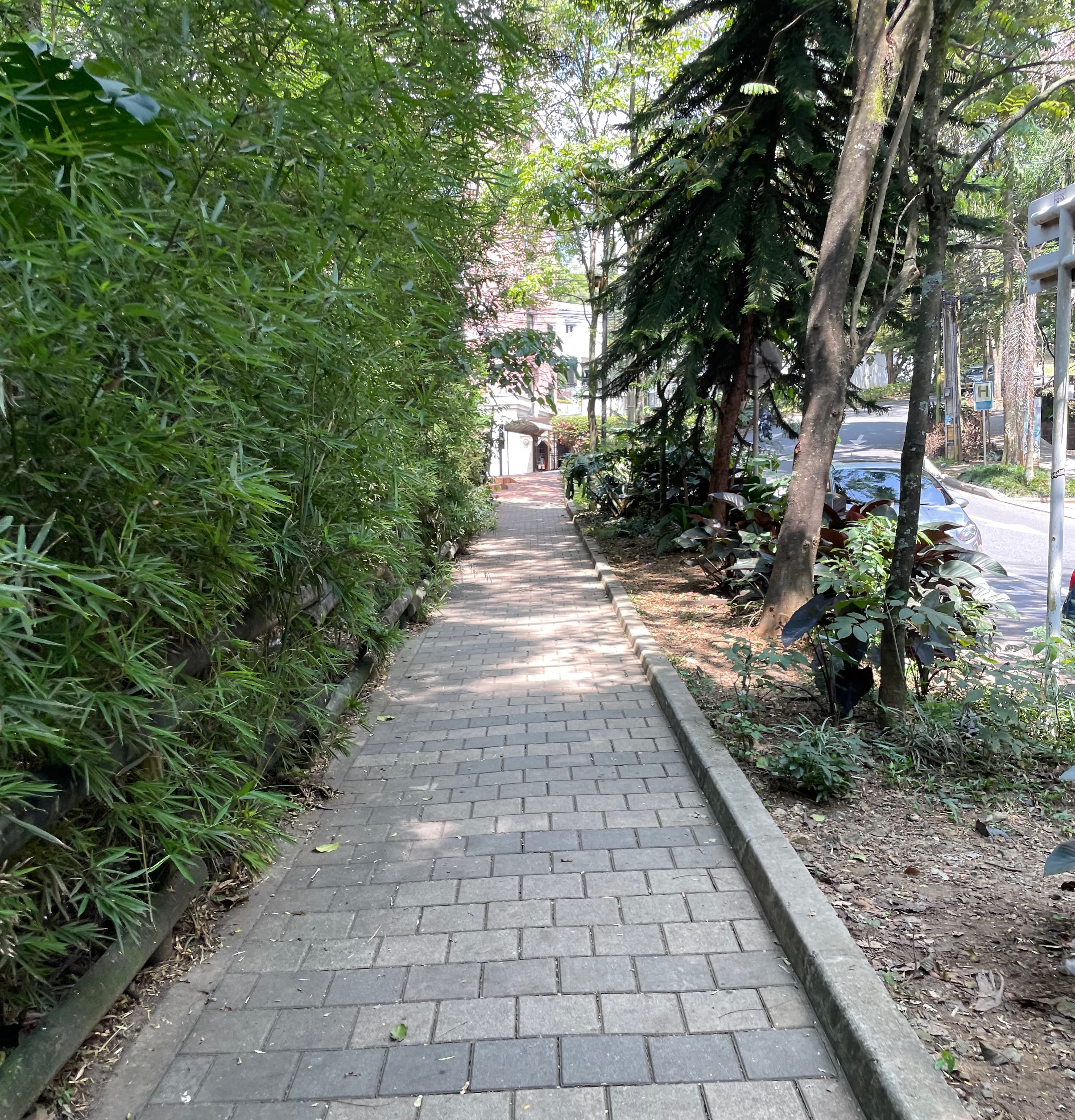
Most days in January, it hasn't rained at all. But when it does, ominous clouds roll in over the mountains to the east between 4:00 and 4:30pm, like clockwork. For a few minutes, I live in shadow while the other end of the valley remains blissfully sunlit.
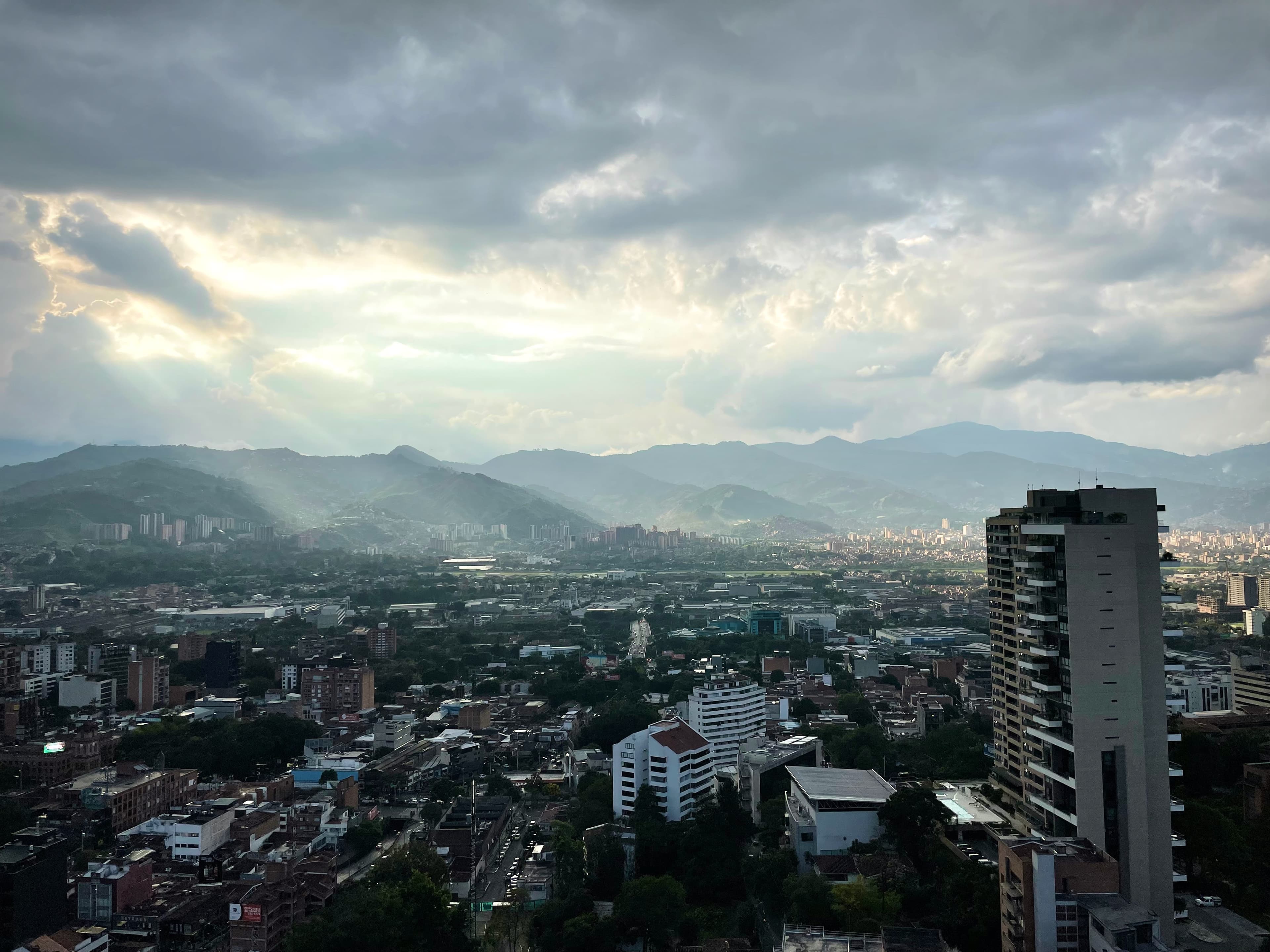
Where I'm staying, the first plump raindrops drip onto the corrugated plastic roofing, distinctly audible like acorns falling from a treetop onto concrete. The percussion accelerates into a pitter-patter, then evens out into a uniform static.
It usually rains for less than 30 minutes. But one day a few weeks ago, the storm gathered strength and became torrential. Lightning struck the valley below, and I counted the seconds till the roar of thunder reached me—never more than three. The highways swelled with traffic, just like the stream that flowed through the neighborhood. I was swallowed by a cloud, though I caught a glimpse of the landscape to the north: it remained crisp and sunny through the dusk.
The sun sets around 6pm, whether visible or shrouded by storm clouds, and the sky becomes inky. Windows in dwellings throughout the valley light up a cozy amber. The rain always lets up by 8pm, and people spill onto the streets, making their own light out of neon and diodes.
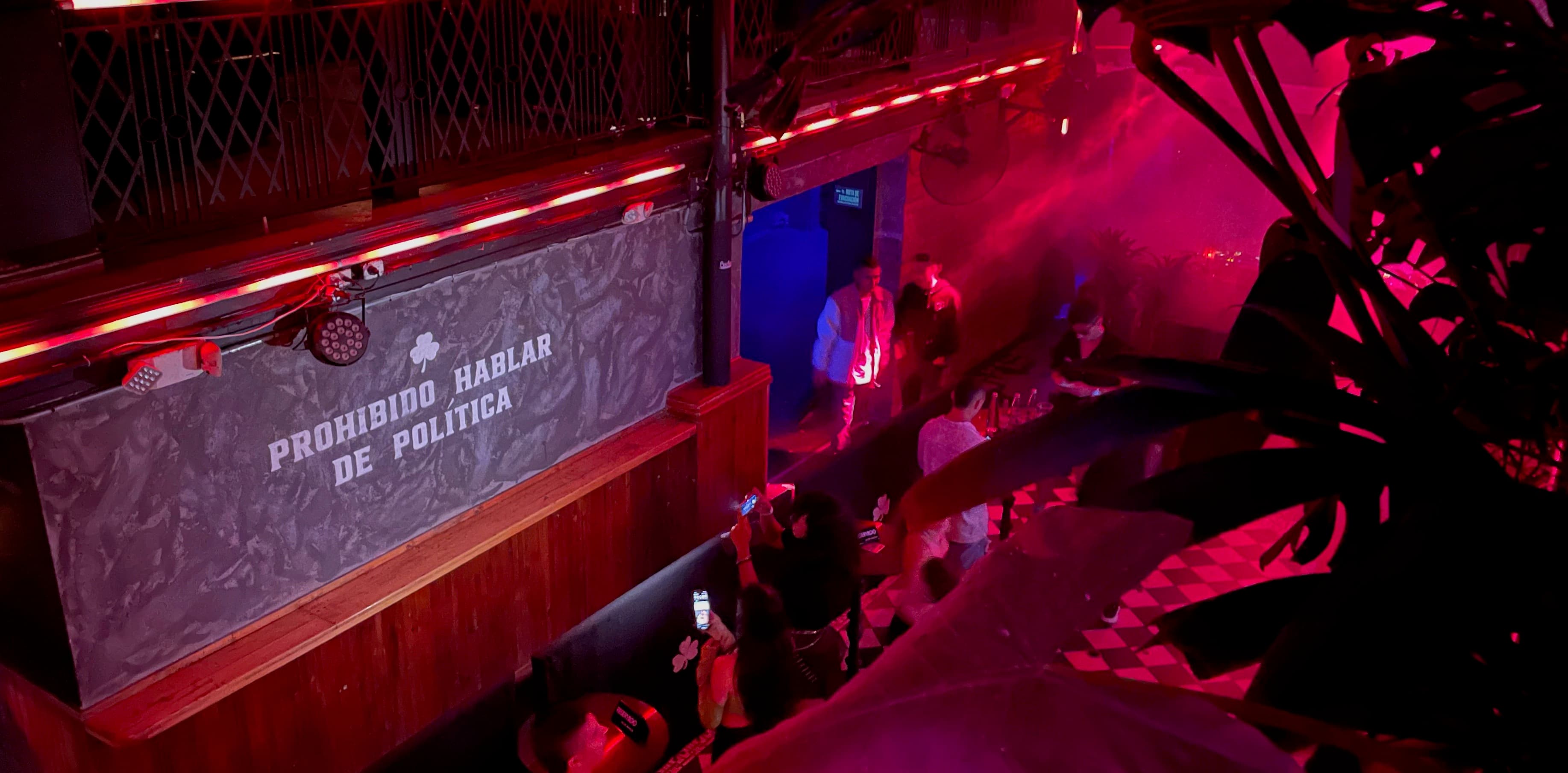
The only other place I've lived that had microclimates like this was San Francisco, where overcast mornings gave way to daily sunshine, dissipating each afternoon as Karl the Fog inevitably rolled in, chilling unprepared visitors to the bone. I think my favorite book about San Francisco, Cool Gray City of Love by Gary Kamiya, put it best:
San Francisco's weather features extreme variations within a relatively small range. The best analogy may be to good wine: […] the fine differences between them are precisely what connoisseurs appreciate. In the same way, a connoisseur of San Francisco's weather learns to enjoy every day's unique bouquet—for they are never exactly the same.
Infrastructure
The story of Medellín's revival is an urbanist's dream—NUMTOTs, this section is for you.
After decades of drug-war violence wracked the city through the 80s and 90s, Medellín was ready for change. It arrived in 2003, when a former mathematics Ph.D. named Sergio Fajardo was elected Mayor of Medellín. He pledged to revitalize the city through a series of public projects, collectively dubbed Urbanismo Social. These included library parks, a unique combination of a public library surrounded by green space; targeted projects in formerly dangerous neighborhoods such as Comuna 13, now a tourist attraction; and further investment in public transit. These changes lead to the city being dubbed the "Innovative City of the Year" in 2013.
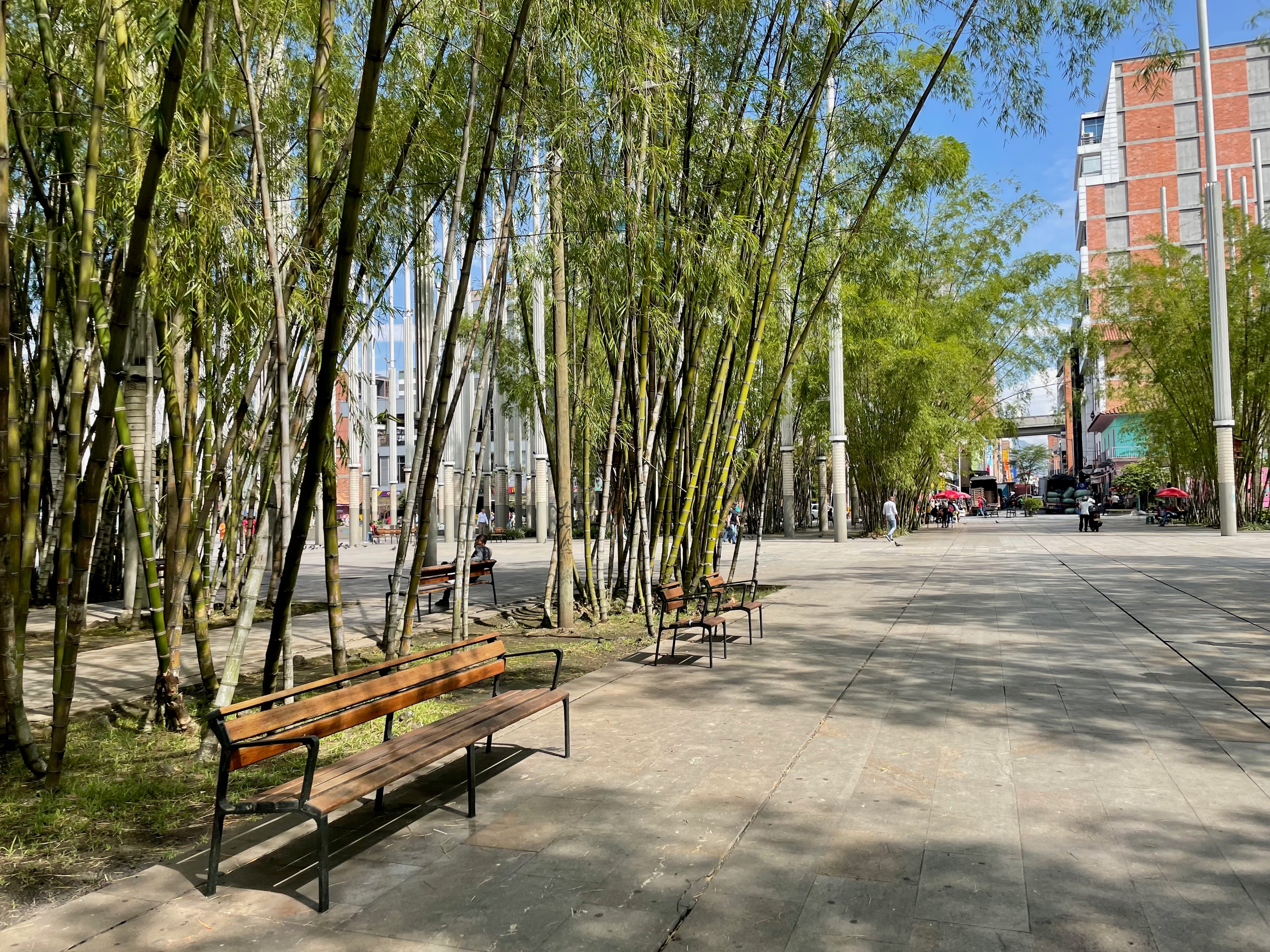
When I took it, I found the Medellín Metro to be incredibly clean, spacious, convenient, and picturesque. The lines run mostly above ground throughout the valley, surrounded by lush vegetation and pleasant views. Trains were running every few minutes.
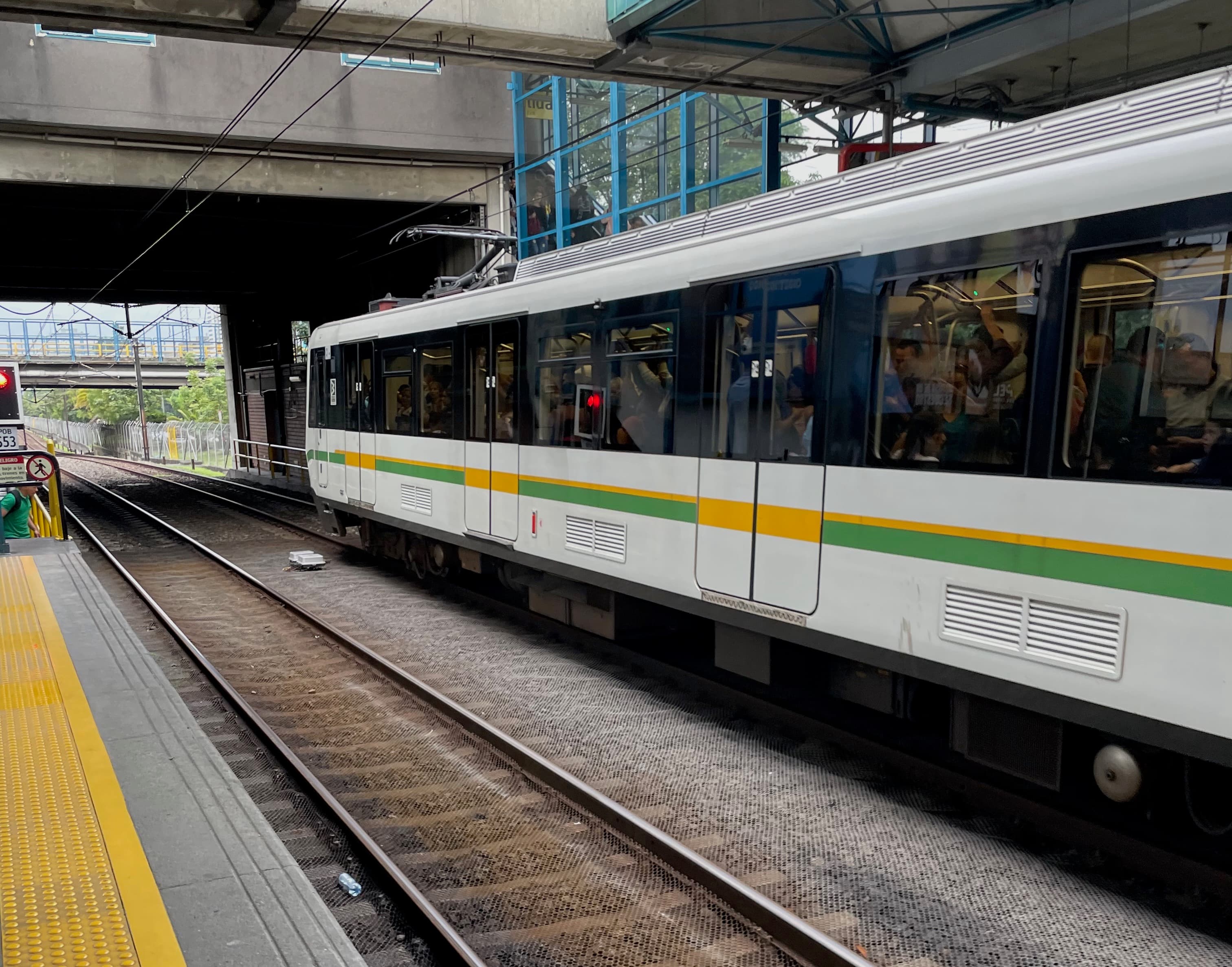
The metro runs through the center of the Aburrá Valley alongside the river. However, much of the city's population lives in the steep hills along the valley, where building a metro or even running a bus system would be challenging. To help connect these populations to the metro, in 2002 the city started constructing the Metrocable system, a series of gondolas that connect the steep hills to the core Medellín Metro. Although the gondolas serve a practical purpose, they're also a popular tourist attraction, especially the Metrocable to Parque Arví, an ecological nature preserve.
Overall, Medellín's public infrastructure struck me as egalitarian, practical, and unique due to the constraints of the valley where the city is situated. To this day, the Medellín Metro is the only light metro system in Colombia (other cities use buses), and the Metrocables are truly one-of-a-kind, with six lines currently active, two of which have opened in just the past few years.
¡Venga!
Considering a visit? After my month here, I highly recommend it, especially in January and February when it's relatively dry (and while it's freezing cold on the East Coast of the USA). If the city continues its current trajectory, I'd predict Medellín will become increasingly popular in the next several years. The temperate climate, warm people, and international interest make it a vibrant place to be.
I've found the food here to be hit-or-miss. In El Poblado where I'm staying, there is a wide variety of international food available, but most things just taste slightly... off, like they were made by someone who isn't that familiar with what the cuisine should taste like. There are some standouts, but it takes some trial and error to find what you like. Mexican food is especially bad—it's much better in the USA than here.
Unsurprisingly, the Peruvian and Colombian restaurants are great. Unfortunately, I'm just not that into Colombian cuisine. The empanadas and buñuelos are great, like anything deep-fried, but I'm not that into the arepas, and the canonical local dish—bandeja paisa, a mountain of meats, plantains, and beans over rice—is just too much food for me to eat regularly.
What I'd recommend to everybody visiting Colombia is to head to a market and try the fruit—the weirder the better. I've loved the grapes, kiwis, passion fruit, dragonfruit, and maduros, and I recommend seeking out the more unique fruits available such as uchuvas, lulo, and guanábana.
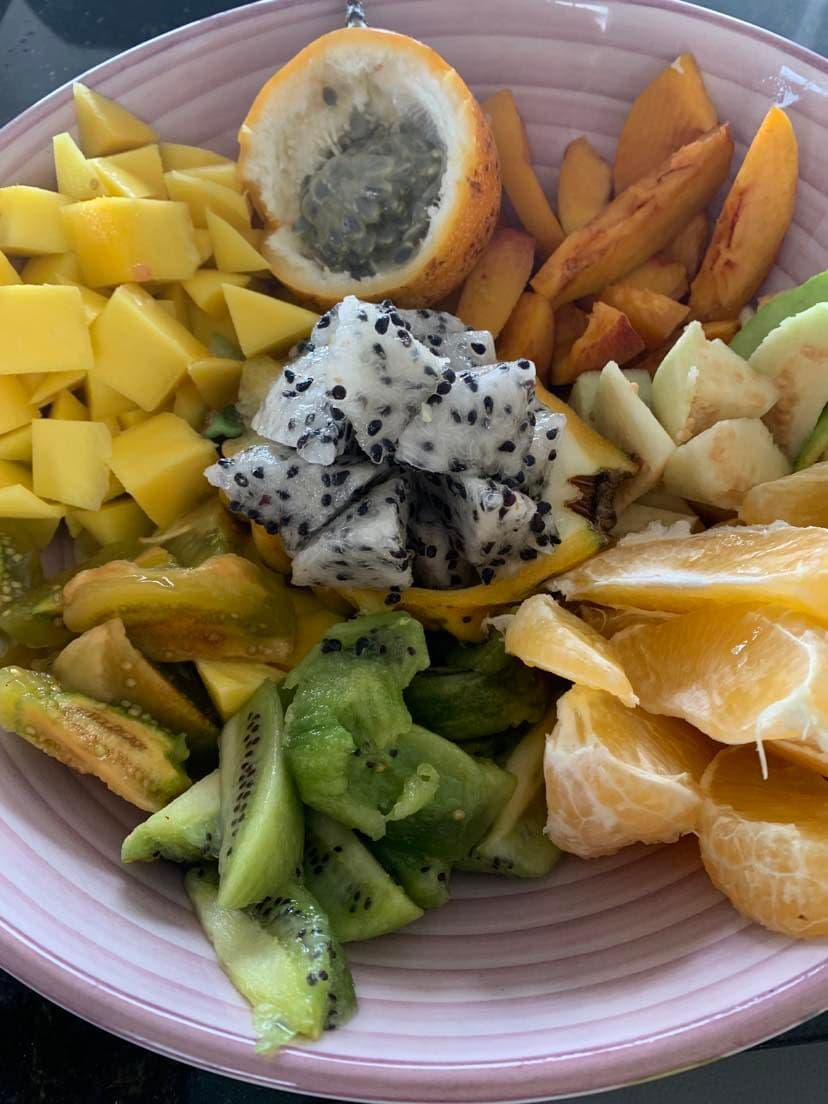
One restaurant I'll mention is Crepes & Waffles, a beloved Colombian chain with locations throughout the city. The menu is extensive, the food is delicious, and interestingly, the chain only hires single mothers to help economically empower families in need.
Although there are sights to see and things to do here, this city above all feels livable—a place ideal for experiencing a different pace of life. If I did it over again, I'd probably stay in Laureles, a neighborhood that feels much more residential and grounded than the purely expat vibe of El Poblado.
Embracing the uncanny
When I reflect on my life in New York City over the past several years, I have almost nothing negative to say. I feel at home there, especially in leafy Brooklyn, and the web of friends and acquaintances I've woven provides a sense of belonging and a support system I know I can rely on.
But spending seven years in one place has inevitably led me to get stuck in ruts, or at least locked me into rhythms. Like carriage wheels carve grooves into soft dirt, the spaces we inhabit and people we interact with create patterns of life and living that are difficult to break away from, especially when they feel altogether pleasant and comforting.
Similar patterns emerge in work and career. Since leaving my job, I've been spending most of my days just focused on creating and writing this blog. "What's the point?" I ask myself. I don't have an answer. All I know is that I feel called to do it.
Right now, I'm just focused on following that feeling of calling, whether it's to write a blog or to head to a total stranger's hot tub for the afternoon. I've only just begun my journeys this year, and I can't say I've definitively learned anything yet. But I have a working hypothesis: following whatever calls to you has value, even if you can't explain it to anyone—including yourself.
Following each day's call feels refreshing to my core, like cool water on a summer's day. This deep sense of relief comes paired with a sense of uncanny that occasionally borders on the absurd. I've become illegible to myself. What am I? What am I doing? Why am I doing it? It feels like I'm walking into the woods without a plan, a destination, or a map. But a tickle in my brain—or, rather, my heart—tells me that into the woods is where I must go.
This week, bursts of vibrant mustard yellow appeared throughout the streets of Medellín—flowers borne by the tree known as guayacán amarillo. According to a recent interview with a forestry professor, these trees flower in synchrony with their cousins in other cities, but nobody knows how or why. "When did they call each other to reach an agreement?" he wonders.
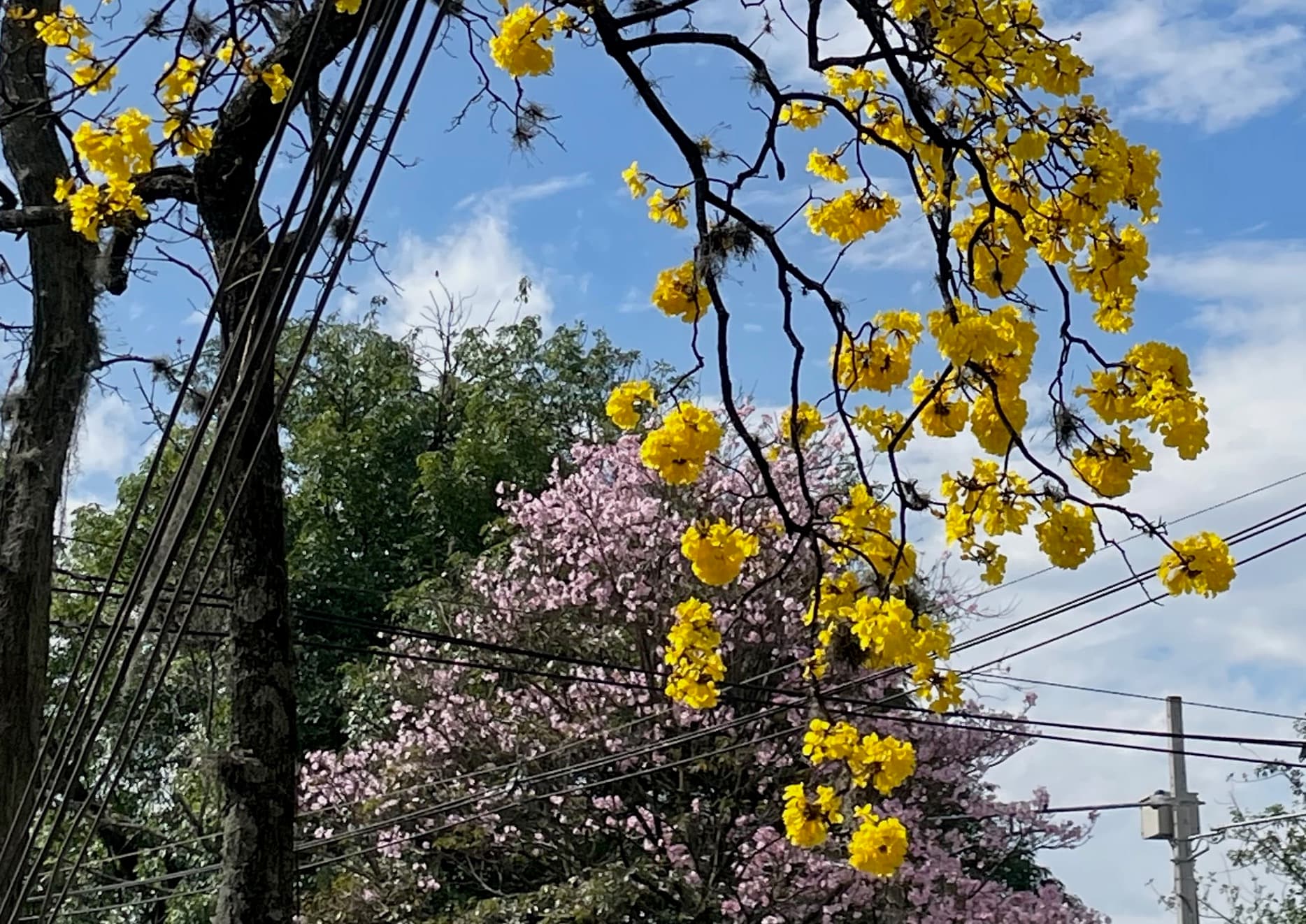
I'm here for another few weeks, then I head onward to Ecuador and the Galápagos Islands.
Hasta luego,
Vipul